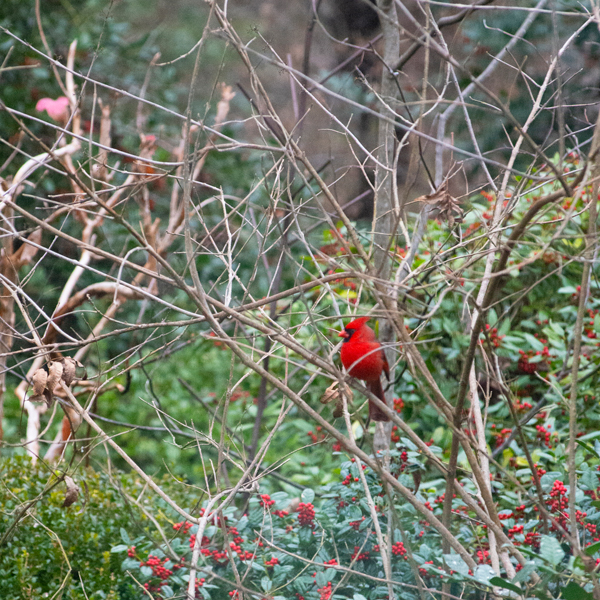A Yard Filled with Birds
We’ve spent a lot of time watching the backyard birds at our feeders during the cold spell this week. Northern birds have flocked into town. They’ve stirred themselves in with the wild birds that are here 12 months a year, and the blended families have had curious reactions to one another.
Cardinals have predominated our populations. At one point Monday afternoon I counted 41 males and females at the feeders, on tree limbs, shrub branches, and on the ground near the feeders. We’ve had many before, but never in that quantity.
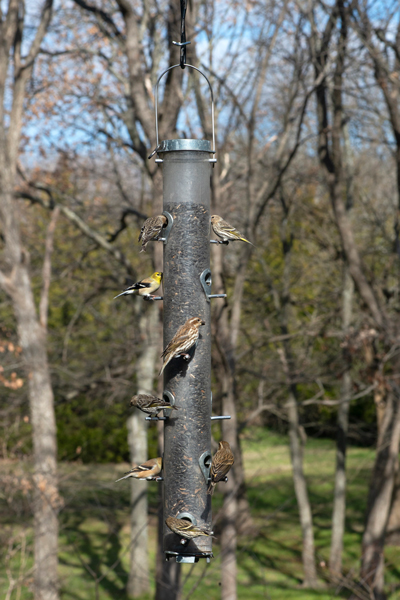
Goldfinches finally arrived at the feeders. Our pastor, Dr. Tommy Brumett of the First United Methodist Church of Downtown McKinney, himself an avid birder, told me his backyard feeders were filled with goldfinches last weekend, no doubt pushed forward by the advance of the cold air.
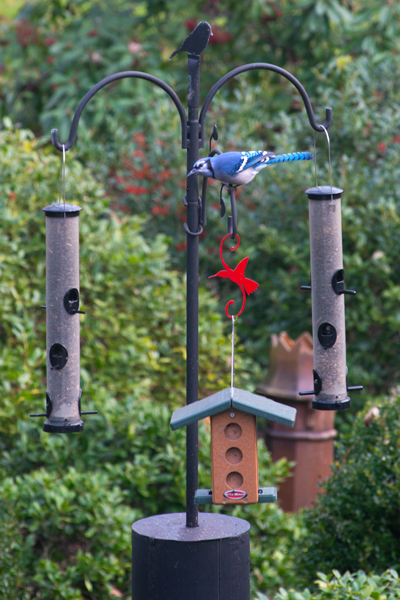
Blue jays are a special delight. They try to feed on the black oil-type sunflower seeds, but they’re too big for those feeders. The folks at our e-gardens advertiser, Wild Birds Unlimited in McKinney, suggested several years ago that I buy in-shell peanuts and one of their peanut feeders. I was back within a couple of weeks to buy my second feeder and more peanuts in a bigger bag. The 8 or 10 jays line up in queue to take their passes at the feeders. They’ve become so adept that they can make their peanut withdrawals while still in flight. They fly off with their peanuts in their mouths like big guys sucking on stogies. We find the shells all over the yard.
We have several species of woodpeckers that frequent our feeders. Compressed cylinders sold by Wildbirds Unlimited stores make quick work of providing food via the cylinders made up specifically for nut-eating species like woodpeckers, nuthatches and chickadees. The cylinders include black oil-type sunflowers, peanuts, and other food sources. They’re also made with holes down their centers, so they slide easily down over posts in specially made feeders.
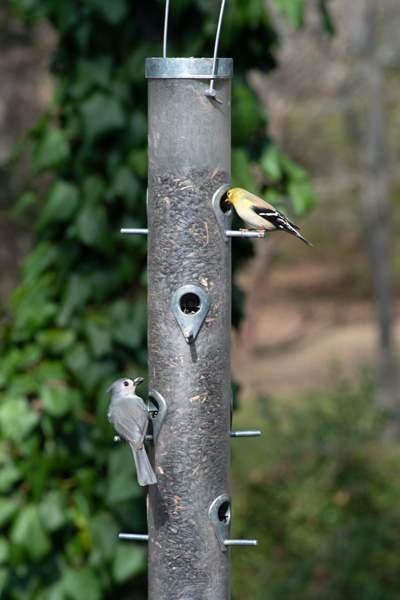
We have tufted titmice and Carolina chickadees in our yard year ‘round. They and other songbirds may be tiny, but their beautiful songs echo through our woods spring, summer, and fall.
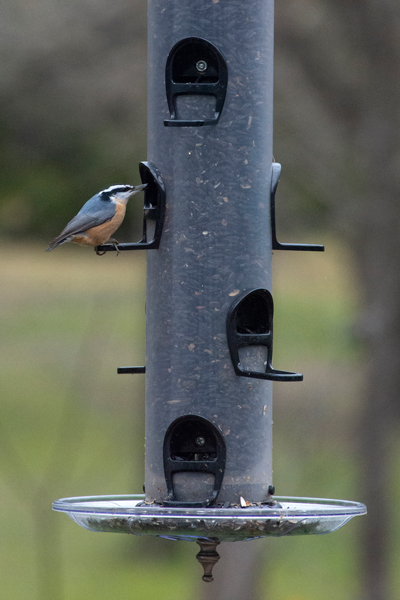
Take a few minutes to visit this fabulous website. It’s the Cornell Ornithology Laboratory’s site https://www.allaboutbirds.org/news/.

And download the incredible Merlin app for your phone. In just a few seconds it will “hear,” identify, and record all the bird songs that you’re hearing around you. I use it many times weekly during the gardening season and I’ve learned that I was sharing my surroundings with birds I’d never met. Best of all, it saves your recordings so that you can go back and play them again months later.


